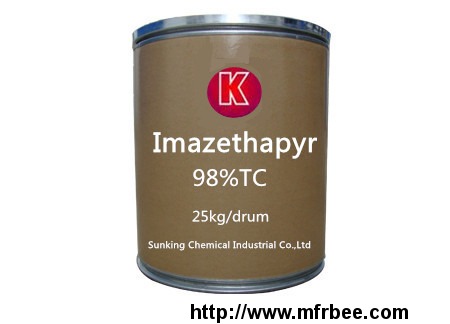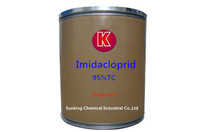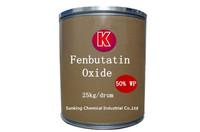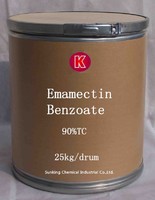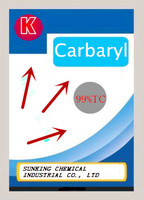Imazethapyr 98%Tech, 75%WP
Specifications
Imazethapyr is a highly efficient herbicide, belonging to the imidazolinone chemical group. The active ingredient is mainly used in soybeans, however, it is also used in crops like corn, oil seed rape and vegetables. Cheminova has launched imazethapyr based products under the trade name DinamazTM in Brazil, Argentina and India and more countries are under consideration for the future.
[APPLICATIONS ] Biochemistry Branched chain amino acid synthesis (ALS or AHAS) inhibitor. Hence reduces levels of valine, leucine and isoleucine, leading to disruption of protein and DNA synthesis. Selectivity in soya benas and peanuts is attributed to rapid detoxification via hydroxylation and glycosylation (B. Tecle et al., Proc. 1997 Br. Crop Prot. Conf. - Weeds, 2, 605). Mode of Action Systemic herbicide, absorbed by the roots and foliage, with translocation in the xylem and phloem, and accumulation in the meristematic regions. Uses Control of many major annual and perennial grass and broad-leaved weeds in soya beans and other leguminous crops. Applied pre-plant incorporated, pre-emergence, or post-emergence. Phytoxicity Non-phytotoxic to soya beans and other leguminous crops, when used as directed. Formulation types SL. Selected tradenames: 'Hammer' (BASF); 'Overtop' (BASF, du Pont); 'Pivot' (BASF); 'Pursuit DG' (BASF); 'Pursuit' (BASF)
[OTHER TRADENAMES ] 'Wayup' (BASF); 'Vezir' (Herbitécnica); 'Vrilec' (Ipesa)
[MAMMALIAN TOXICOLOGY ] Oral: Acute oral LD50 for male and female rats, and female mice >5000 mg/kg. Skin and eye: Acute percutaneous LD50 for rabbits >2000 mg/kg; mild skin and reversible eye irritant. Inhalation: LC50 for rats 3.27 mg/l air (analytical), 4.21 mg/l (gravimetric). NOEL (2 y): for rats >10 000 mg/kg diet; (1 y) for dogs >10 000 mg/kg diet (highest dose tested). WHO hazard class: III (Table 5) Other: Non-mutagenic in the Ames test. Toxicity class: III
- Country: China (Mainland)
- Address: Mingshu Rd, Jiangshan Ind Zone, Yinzhou, Ningbo , China
- Contact: Teng Xia
